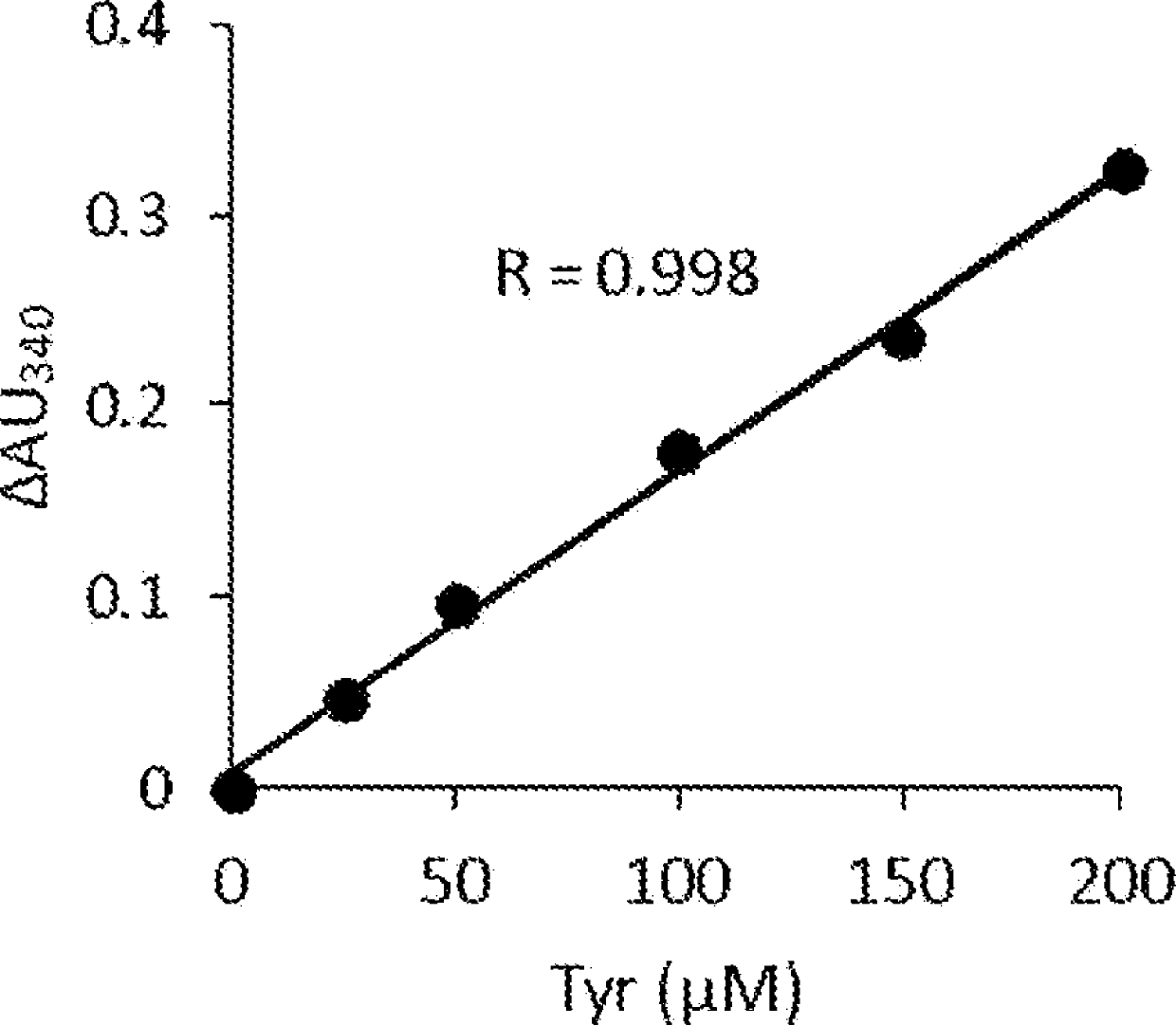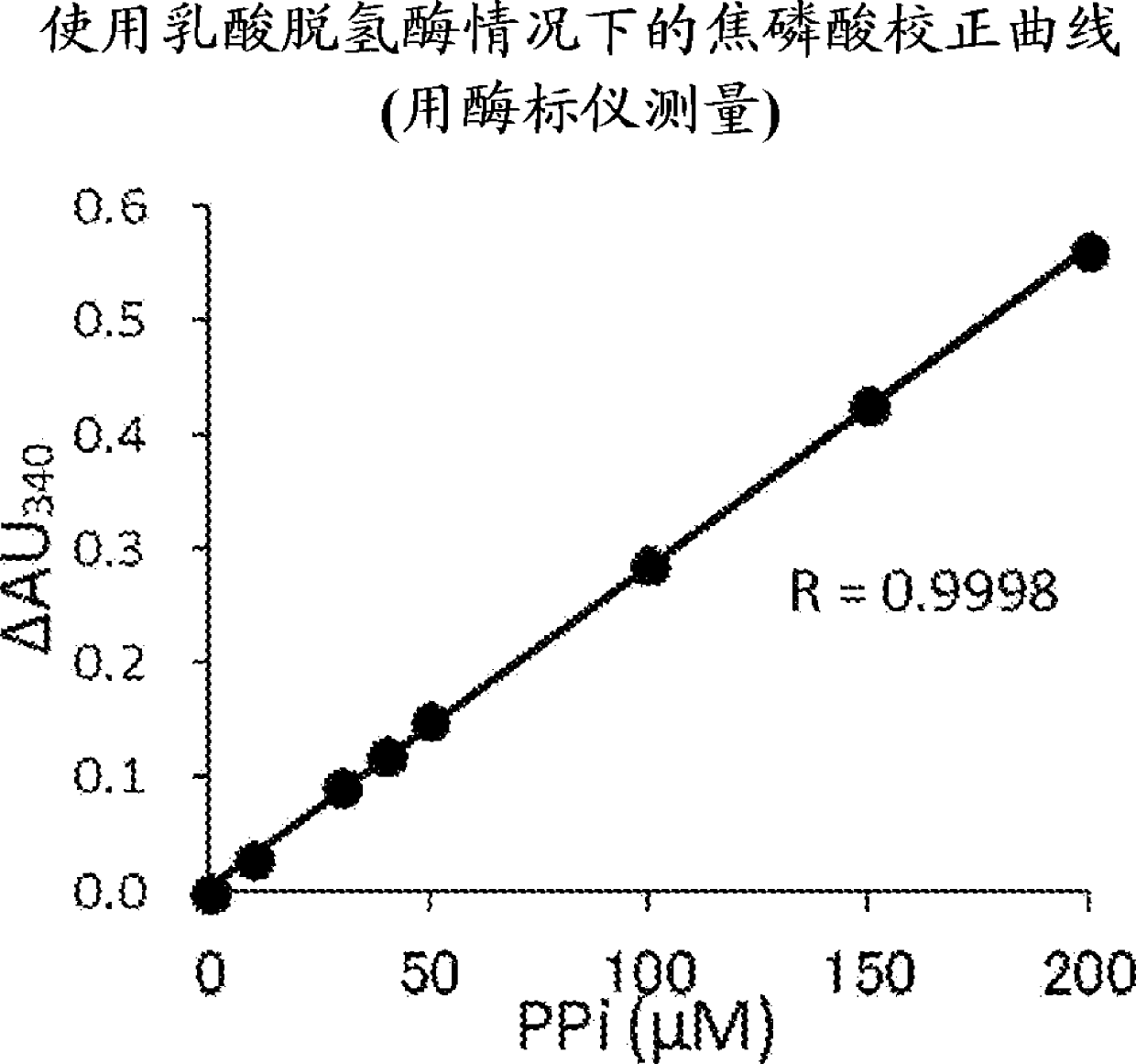Method for quantifying target substance
A substance and substrate technology, applied in the field of quantitative pyrophosphate, which can solve the problem that ATP cannot respond to the regeneration of pyrophosphate
- Summary
- Abstract
- Description
- Claims
- Application Information
AI Technical Summary
Problems solved by technology
Method used
Image
Examples
Embodiment 1
[0430] 1. Example of Enzyme Preparation
[0431] 1-1. Construction of PPDK expression plasmid
[0432] Propionibacterium freudennerii subsp. shermanii PPDK (PfPPDK) derived from NBRC 12426 strain and plasmid attached to PPDK (TtPPDK) derived from Thermoproteus NBRC 100435 strain. Genomic DNA was prepared from cells of each strain.
[0433] The PfPPDK gene was amplified by PCR using the genomic DNA obtained above as a template and primers (SEQ ID NO: 2 and 3) designed based on the PPDK gene sequence (SEQ ID NO: 1) obtained from the database. The amplified product was inserted into pET-28a to obtain a plasmid for expressing PfPPDK. The TtPPDK gene was PCR amplified by using the genomic DNA obtained above as a template and primers (SEQ ID NO: 5 and 6) designed based on the PPDK gene sequence (SEQ ID NO: 4) obtained from the database. The amplified product was inserted into pET-28a to obtain a plasmid for expressing TfPPDK.
[0434] Each expression plasmid was sequenced...
Embodiment 2
[0447] 2. Example of Quantification of Pyrophosphate
[0448] 2-1. Example of reaction conditions for quantification of pyrophosphoric acid (1)
[0449] A test sample containing pyrophosphoric acid and a reaction mixture for quantifying pyrophosphoric acid having the following components were mixed. The mixture was maintained at 30°C to allow the reaction to progress and the decrease in absorbance at 340 nm was measured. The volume of the mixture is 1 ml or 200 μl. Absorbance measurements were performed with cuvettes and absorptiometers with an optical path length of 1 cm (for the former volume) or with microplates and a microplate reader (with a variable optical path length) (for the latter volume). In the graphs shown in the accompanying drawings, the absorbance measured with a cuvette with an optical path length of 1 cm is represented by Abs, and the absorbance measured with a microplate is represented by AU.
[0450] Reaction mixture for quantification of pyrophosph...
Embodiment 3
[0475] 3. Example of quantification of methionine
[0476] 3-1. Examples of reaction conditions for quantifying methionine
[0477] A test sample containing methionine and a reaction mixture for quantifying methionine having the following components were mixed. A 200 μl volume of the mixture was maintained at 30°C to allow the reaction to progress and the decrease in absorbance at 340 nm was measured with a microplate reader.
[0478] Reaction mixture for quantification of methionine: 20 mM imidazole-HCl (pH 7.0), 5 mM MgCl 2 , 1 mM ATP, 0.5 mM PEP, 0.4 mM AMP, 0.25 mM NADH, 0.1 U / ml PfPPDK, 0.5 U / ml lactate dehydrogenase and 0.2 U / ml AdoMetS (the concentration is the final concentration after mixing with the test sample).
[0479] 3-2. Example of preparation of calibration curve for quantification of methionine
[0480] As test samples, a standard methionine solution and a standard pyrophosphate solution were used which were mixed with the reaction mixture to give a ...
PUM
 Login to View More
Login to View More Abstract
Description
Claims
Application Information
 Login to View More
Login to View More - R&D
- Intellectual Property
- Life Sciences
- Materials
- Tech Scout
- Unparalleled Data Quality
- Higher Quality Content
- 60% Fewer Hallucinations
Browse by: Latest US Patents, China's latest patents, Technical Efficacy Thesaurus, Application Domain, Technology Topic, Popular Technical Reports.
© 2025 PatSnap. All rights reserved.Legal|Privacy policy|Modern Slavery Act Transparency Statement|Sitemap|About US| Contact US: help@patsnap.com



